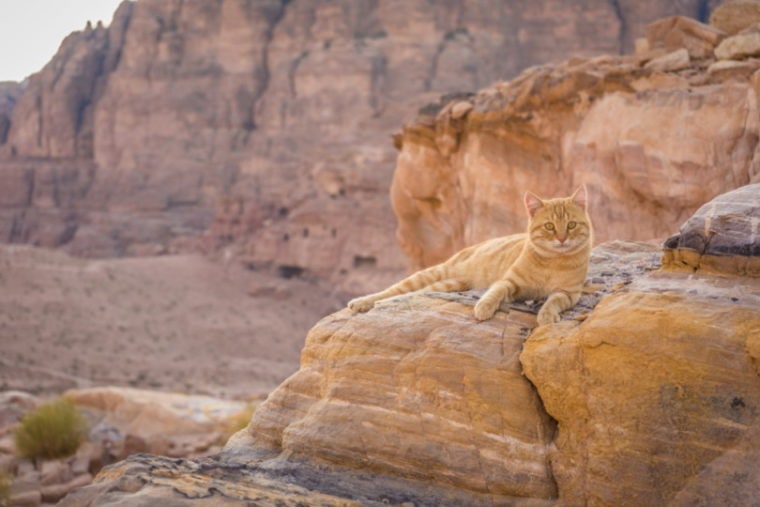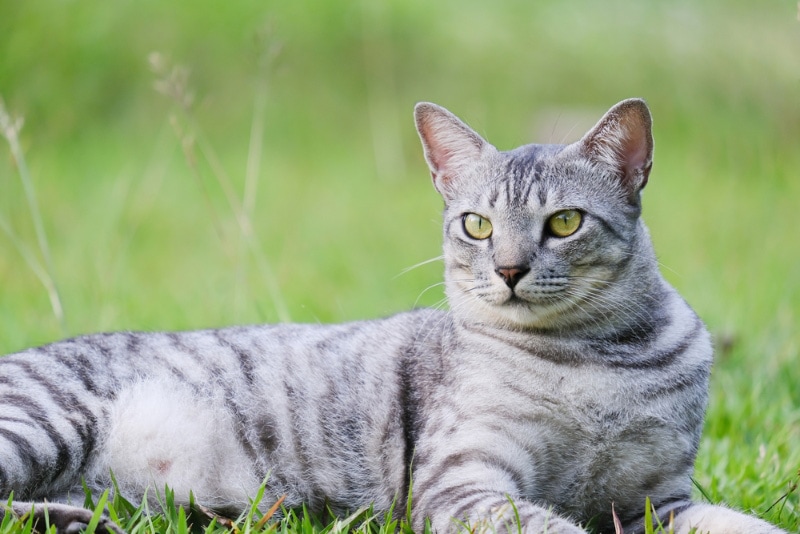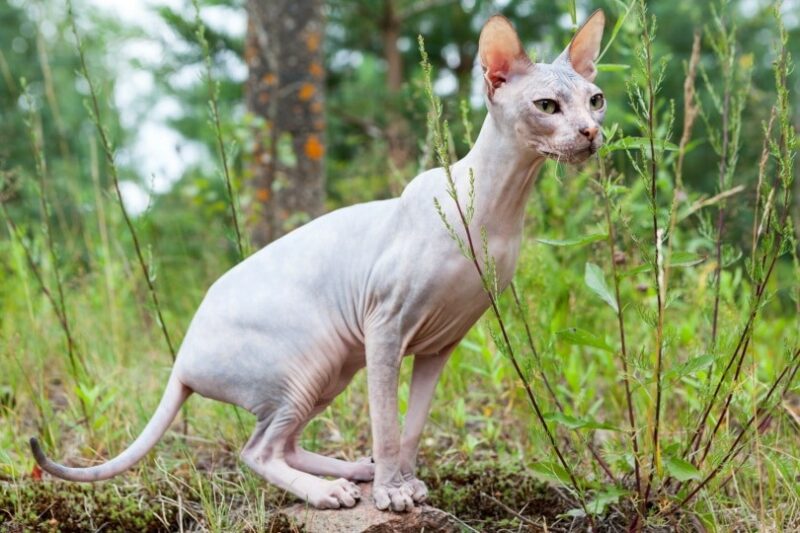
For over 3,000 years, cats were symbols of social and religious practices in ancient Egypt. Many Egyptian deities were made into statues with cat-shaped heads representing fertility, power, and justice. The Egyptians also wore detailed cat-themed jewelry and mummified cats adorned with iron and beaded collars. Countless cat artifacts exist today that prove how revered these cats were in Egypt. In this article, we talk more about the history of cats in Egypt and why they were so beloved.
Did Egyptians Domesticate Cats?
The first appearance of cats in the art of ancient Egypt was around 1950 B.C.E. Someone painted a domestic cat on the back wall of a tomb just south of Cairo. Cats appeared regularly after that in paintings and sculptures in Egypt. They were immortalized as mummies and respected as gods. For these reasons, people believed that the Egyptians were the first to domesticate cats.
This changed in 2004 when a 9,500-year-old cat was found buried with a human on the island of Cyprus. This proved that cats had been domesticated thousands of years before Egypt existed.

Why Did Egyptians Love Cats?
Egyptians valued and respected cats, but why did this love begin? There are two main reasons. First, cats were deeply ingrained in the Egyptians’ beliefs and faith. Cat goddesses were worshipped by humans because they believed that these goddesses would bring them fortune and fertility. The second reason is due to what the cats provided.
When the Egyptians would store their produce after a harvest, rodents often ate the crops, which would then be spoiled and useless. Cats prevented this by killing the rodents before they could get to the crops. Cats were crucial in securing food for people, so they were adored by the Egyptians, especially when food was scarce.
Homes that did not have cats had already begun to leave food out for feral cats to attract them and get them to stay. Soon, nearly every Egyptian household had cats to keep away not only rodents but also snakes, scorpions, and other threats.
Mourning Cats That Died
The Egyptians loved their cats so much that when one died, they mourned them by shaving off their eyebrows. The mourning period would last until their eyebrows grew back. If someone killed a cat, they were sentenced to death. This was true, even if it was an accident.
Cats were often adorned with jewels and fed high-class treats that were fit for royals. When cats died, they were dressed in these jewels before being mummified. They were also often buried with their owners.
How Did Cats Get to Egypt?
The first cats in Egypt were likely native African wildcats that local farmers domesticated. These cats arrived in Egypt around 2,000 B.C.E. on ancient trading ships. It didn’t take long for the Egyptians to recognize the value of cats, and they grew to admire the felines.
Cats became respected and loved over the years. This is shown in the artwork of the Egyptians. Paintings and drawings on tombs depicted the cats as hunters and protectors. The tomb of Nebamun from 1350 B.C.E. features a painting of a cat catching three birds.

Did the Egyptians Worship Cats?
The Egyptians loved and admired cats but did not worship them as gods. They considered cats to be representations of the divine characteristics of their gods. To harm a cat was to insult the gods and goddesses that the Egyptians did worship. Since many people were buried with their cats or gave their cats impressive tombs, they were also considered important in the afterlife. Some Egyptians believed a deceased person could enter the cat’s body in the afterlife.
The Egyptians also believed their gods could be cats and inhabit their bodies. Breeding and mummifying cats became an entire economy in Egypt. The only exception to killing cats was for the purpose of mummification. Cats were often bred for this purpose and then killed to be mummified. In 1888, a tomb in Beni Hassan that contained 80,000 cat burials was discovered. Many of these cats were killed while they were young, either by strangulation or blunt-force trauma.
Ancient Egyptians respected cats, but they were a favorite of the pharaohs. These kings kept cats like the Sphynx and Egyptian Mau. They dressed these cats in gold and let them eat the food from their plates. While the lower class couldn’t afford to dress their cats in gold and jewels, they often made jewelry featuring cats.
Final Thoughts
Egyptians today still love their cats, and Egyptian breeds like the Sphynx and the Egyptian Mau still resemble their ancestors, who were once the cats of the pharaohs. The Egyptians’ dedication to cats has proven that cats have been loyal companions to humans throughout the ages, and they will continue to be important to people worldwide for centuries to come.
See also:
- 15 Historical Facts About Cats in Ancient Egypt
- Why Are There So Many Cats in Cyprus? History & Facts
Featured Image Credit: LeaDigszammal, Shutterstock






